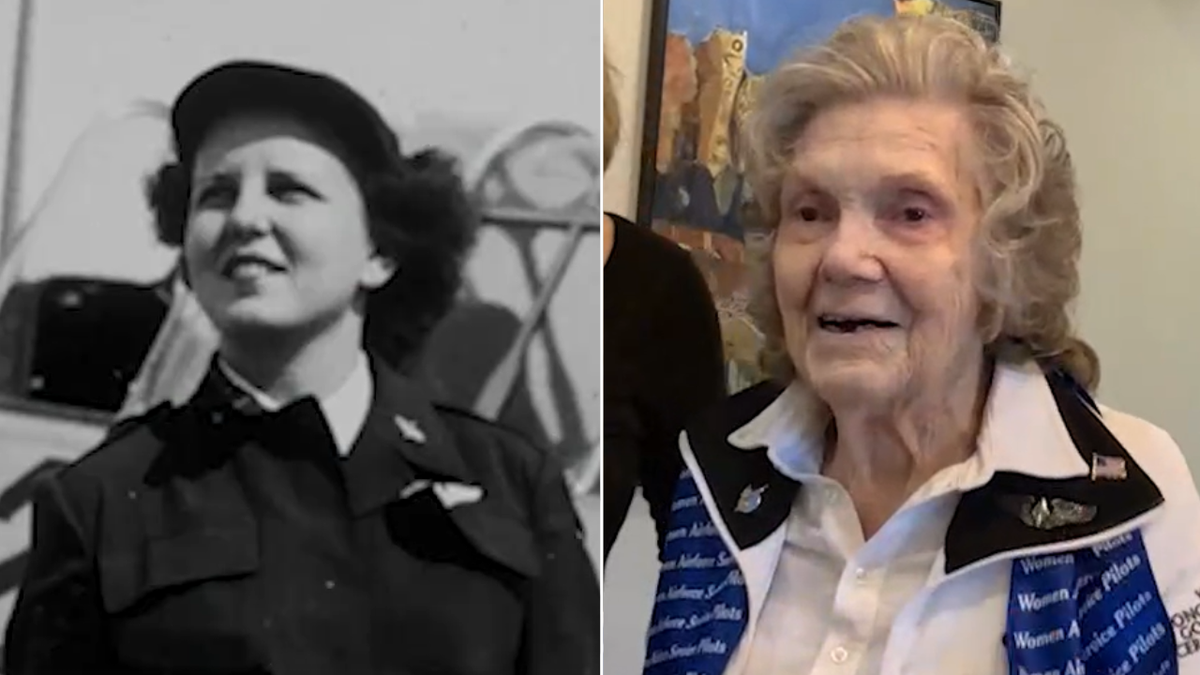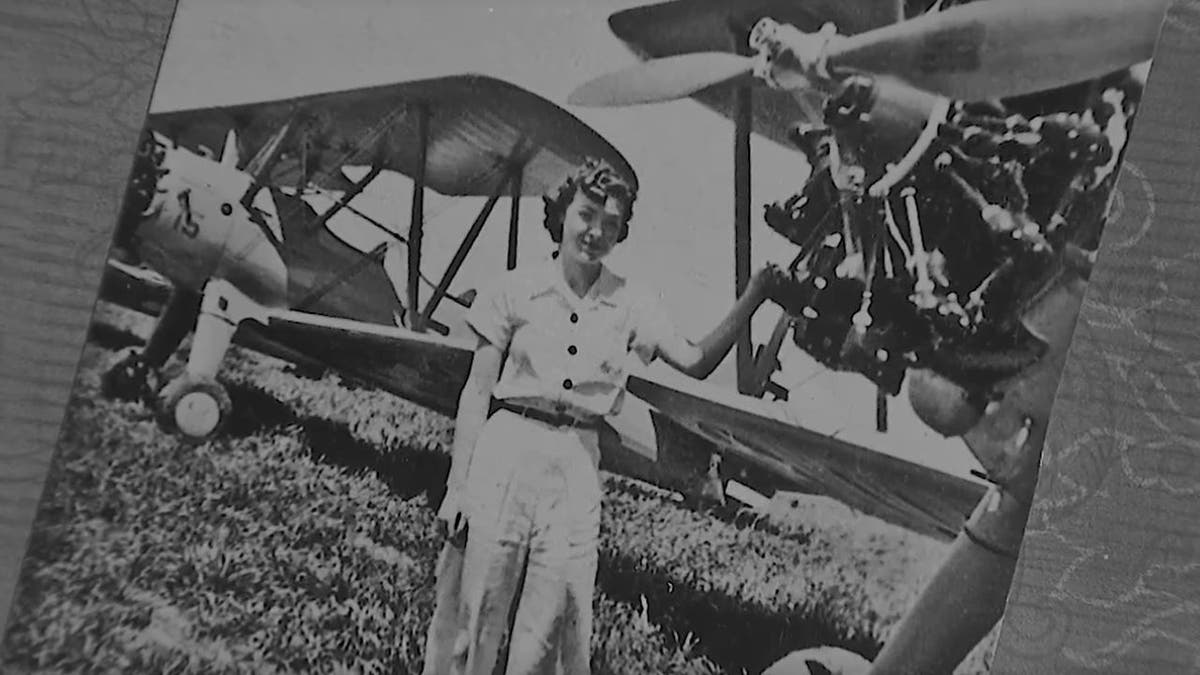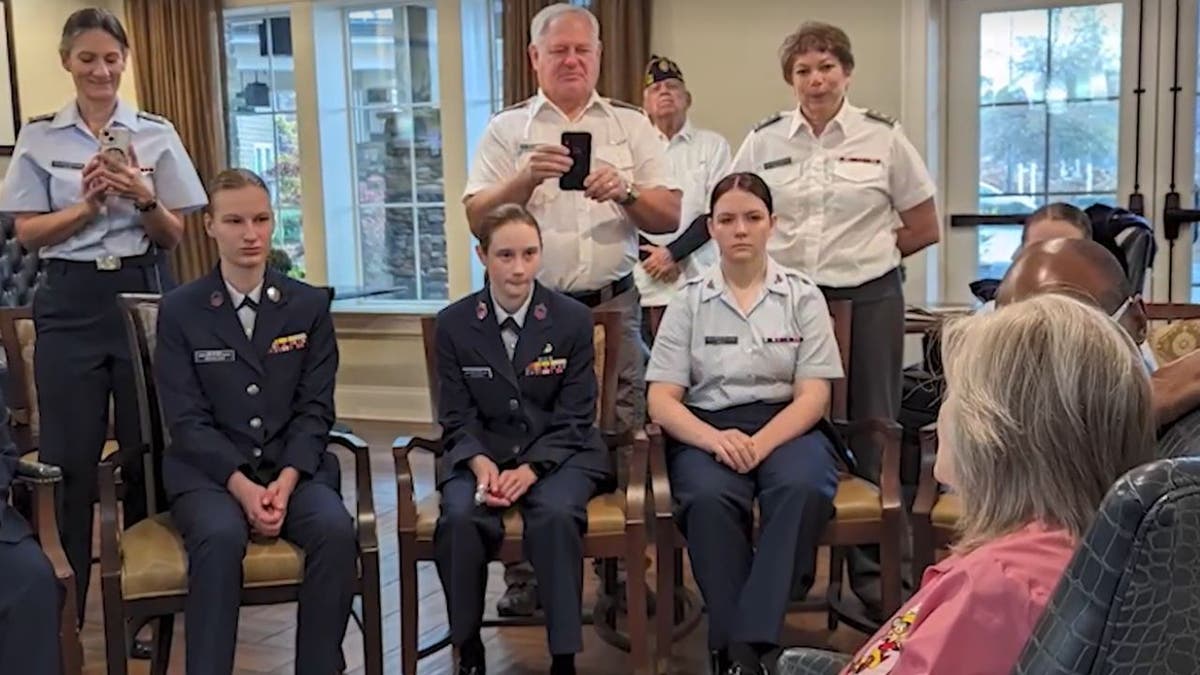VA nixes plan to ban iconic WWII kiss photo following outrage
Fox News' Lucas Tomlinson reports the latest on the reversal.
A female centenarian who served in World War II recently shared her life story with U.S. Air Force Civil Air Patrol cadets in Georgia.
Jerrie Badger, 102, a resident of Suwanee, Georgia, served in the civilian Women Airforce Service Pilots (WASP) unit during World War II. The competitive group only admitted 1,100 women, which was less than 5% of its applicants, according to FOX 5 Atlanta.
Badger is one of seven living WASP pilots, according to the Civil Air Patrol. She told the civilian auxiliary that her family initially discouraged her from becoming a pilot.
WWII VET TURNS 103, CREDITS DAUGHTERS FOR HIS LONGEVITY: 'MAKES ME STRONGER'
"My family was opposed to me flying," she recalled. "Women didn’t do that at that time."

At 102 years old, Jerrie Badger is one of seven living WASP pilots. (FOX 5 Atlanta)
"They didn’t like it, but I did it anyway."
Gen. Henry "Hap" Arnold created the WASP unit in 1942, when the Air Force was still part of the Army. The WASP unit was the subject of some criticism from male pilots at the time.
"It was a very sought-after career for the men and the women were, well, [they thought] we should be at home washing dishes," Badger recalled.
Despite the U.S. military's desperate need for pilots during World War II, being accepted into the program and making it through was no picnic.

Jerrie Badger recalls that she developed her love of flying after taking her first plane ride when she was 18 years old. (FOX 5 Atlanta)
"You had to be good period, or you'll get killed," the centenarian said. "If you got your wings, you know you were good."
Badger, who graduated from the last WASP class in 1944, told FOX 5 that she realized her love for flying after she took her first plane ride at 18, which was around 1940.
"I found everything about it very intriguing, very interesting," she recalled. "I found what I loved."
National WASP WWII Museum Lisa Taylor told FOX 5 Atlanta that female pilots served at every military base in the U.S.
Thirty-eight WASP pilots died during their service, according to the United States Air Force website.
CLICK HERE TO SIGN UP FOR OUR LIFESTYLE NEWSLETTER

Badger graduated from the last WASP class in 1944, which was considered an elite, competitive program. (FOX 5 Atlanta)
"They flew in all 77 aircraft the government had," Taylor said. "They collectively flew 66 million miles in 2 years."
Gen. Arnold advocated for WASP pilots to get full military status, but the plan was never approved by Congress. Today, WASP pilots are still considered civilian pilots.
The group of female pilots eventually gained more recognition throughout history, and all of its members were awarded the Congressional Gold Medal in 2009.
Badger told the Civil Air Patrol that her best life advice is for everyone to believe in themselves and in their dreams.

Badger recently spoke about her story with Civil Air Patrol cadets. (FOX 5 Atlanta)
CLICK HERE TO GET THE FOX NEWS APP
"My advice in life is to have the desire to do what it takes [to achieve your goal], whether it’s what you would like to do or not, and work to get where you want to be," Badger said.
For more Lifestyle articles, visit www.foxnews.com/lifestyle.




















